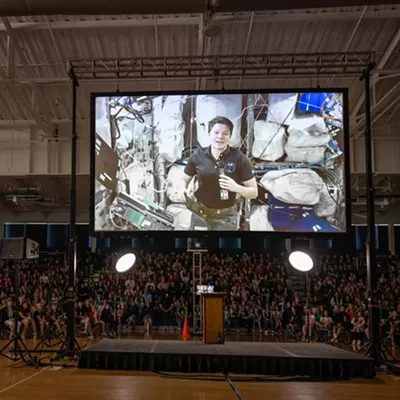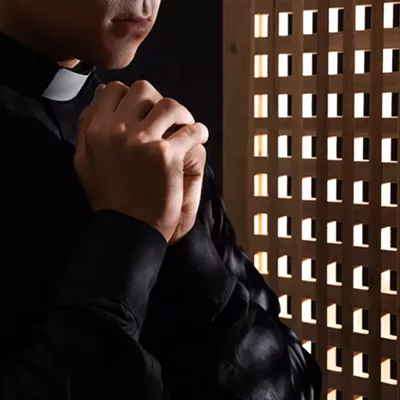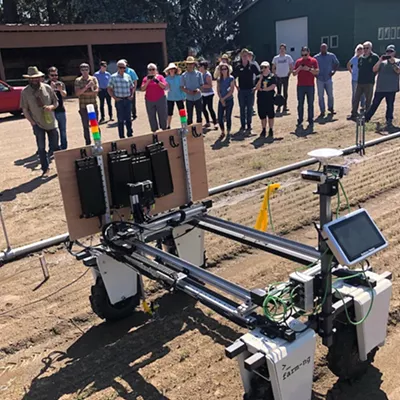As much as the Nez Perce Tribe has lost over the years -- the majority of their land, many of their people and even some of their old ways -- the loss of their horses, specifically the herd that was lost at the Battle at Bear Paw, wounded the tribe to its very core.
The Nez Perce are horse people. Ever since they got a hold of the first horses -- typically horses of European descent that had escaped from early Spanish explorers and white settlers -- the Nez Perce took to riding and training their horses not just as servants, but as partners and friends in peace and in war.
The tribe was one of the few tribes in the Northwest that selectively bred horses, as long as they were "sound, fast and smart," the Nez Perce saying goes.
Lewis and Clark noted that the Nez Perce horse was a great animal, which easily compared to the best driving and riding horses they'd seen back in Virginia. And that was quite a compliment. Most horses in the New World were impressive Spanish mounts bred for hundreds and hundreds of years to fight bulls and carry their owners in battle. Some were driving horses of equally noble decent. And there were also English thoroughbreds on the East Coast, imported by wealthy plantation owners for racing and for pleasure.
At the Battle of Bear Paw, however, most of the Nez Perce herd was lost. Rounded up by the advancing army, most of the several hundred horses were slaughtered on the spot. With them died generations of careful horse breeding. It would take more than 100 years, as well as the introduction of a rare horse from Asia, before the tribe had the courage to approach horse breeding again.
It's hot in Lewiston this early September morning. A country station is blaring the latest hits from a dust-covered transistor radio as Ted George makes the rounds, giving water, adding fresh shavings and feeding hay. Flies buzz. Horses snort. A group of long-legged colts squeal and pretend-fight before it gets too hot to do anything other than hang their heads and wait for the sun to set. George is taking care of about 40 horses at the Nez Perce Horse Registry breeding facility, just south of Lapwai, Idaho. Together with Rudy Shabalah, who started the program back in 1995, he's working to give the horse back to the Nez Perce.
"We acquired four Akahl-Teke stallions, and then we purchased 33 appaloosa mares and started breeding," says Shabalah. "Since then, we have developed rules and regulations for the breed -- it's easy to say that now, but it took a while." The official registry was finalized in 1998.
George has only been working at the facility for a month, yet he talks about the horses as if they had been part of his life for years.
"It's hard to explain what it means to us," he says, rubbing one of the colts behind the ears. "The horse traditionally was the wealth of our tribe. My great-grandfather was a scout in the war of 1877. The tragedy that happened to the horses there is part of our history. During the war, many of us tried to save the horses as we were being attacked, but we couldn't..." George's voice trails off.
"But that is many years ago. The horses here, to us, are part of a cultural aspect we are trying to bring back."
Breeding the 'hotter' Akahl-Teke stallions to the sturdy appaloosas hopefully will combine the best of the two.
"The appaloosa is bred to be sure-footed, you know, and some have great cow-sense, but mostly they are great, reliable working horses," says George. "The Akahl-Teke, on the other hand, is more like a thoroughbred, and they have been used just like Arabians and English thoroughbreds to improve on other horse breeds throughout history. We want to do the same."
The Akahl-Teke is a desert horse. It's known for its incredible endurance and great intelligence as well as its ability to get by on very little food. And there's one more thing: its coat has a metallic sheen, something that lead early European explorers of Asia to believe that the horses they saw were somehow, literally, golden.
At least one shiny golden colt now wanders this corral outside Lewiston, far from the Asian steppes where it originated but close to the hearts of the people who care for it.
The Nez Perce horse looks slightly Arabian, yet taller. It easily stands 15-16 hands. It has long, dry legs, much like a race horse, a steep shoulder, a long neck and a somewhat narrow chest. Many carry the white spotted blanket of their Appaloosa heritage, or sport white blazes that turn their muzzles soft pink. They compare quite favorably with modern riding horses, though they are slighter than both quarter horses and appaloosas. Some look quite skinny, and George explains it's a challenge to keep some of them looking well-fed because they can get by on so little food.
"I guess they have different appetites," he says.
The horses don't all stay with the tribe. Over the years, about 200 of them have found homes off the reservation.
"Yeah, some are for sale," says George, eyeing the group. "But mostly, we take them to parades and to the rodeos so people can see them." He talks about going to the Lewiston Roundup in a couple of weeks. The tribe also takes the horses to the annual commemorative encampment at Bear Paw, where they participate in the empty saddle ceremony, honoring all the warriors lost there.
"We've had saddles made, like they were in the old days, so we can present the horses fully dressed, like they used to look," he says.
But the horses are not just about showing off. Through the Young Horseman Program, the Tribe matches Nez Perce tribal members between 14 and 21 with a horse to care for and maintain -- a way of teaching responsibility and caring that's been adopted by many troubled teen programs across the nation.
"It gives a lot to the kids," says George. "It gives them something to do, to take care of, to be proud of. It means so much to them."
















